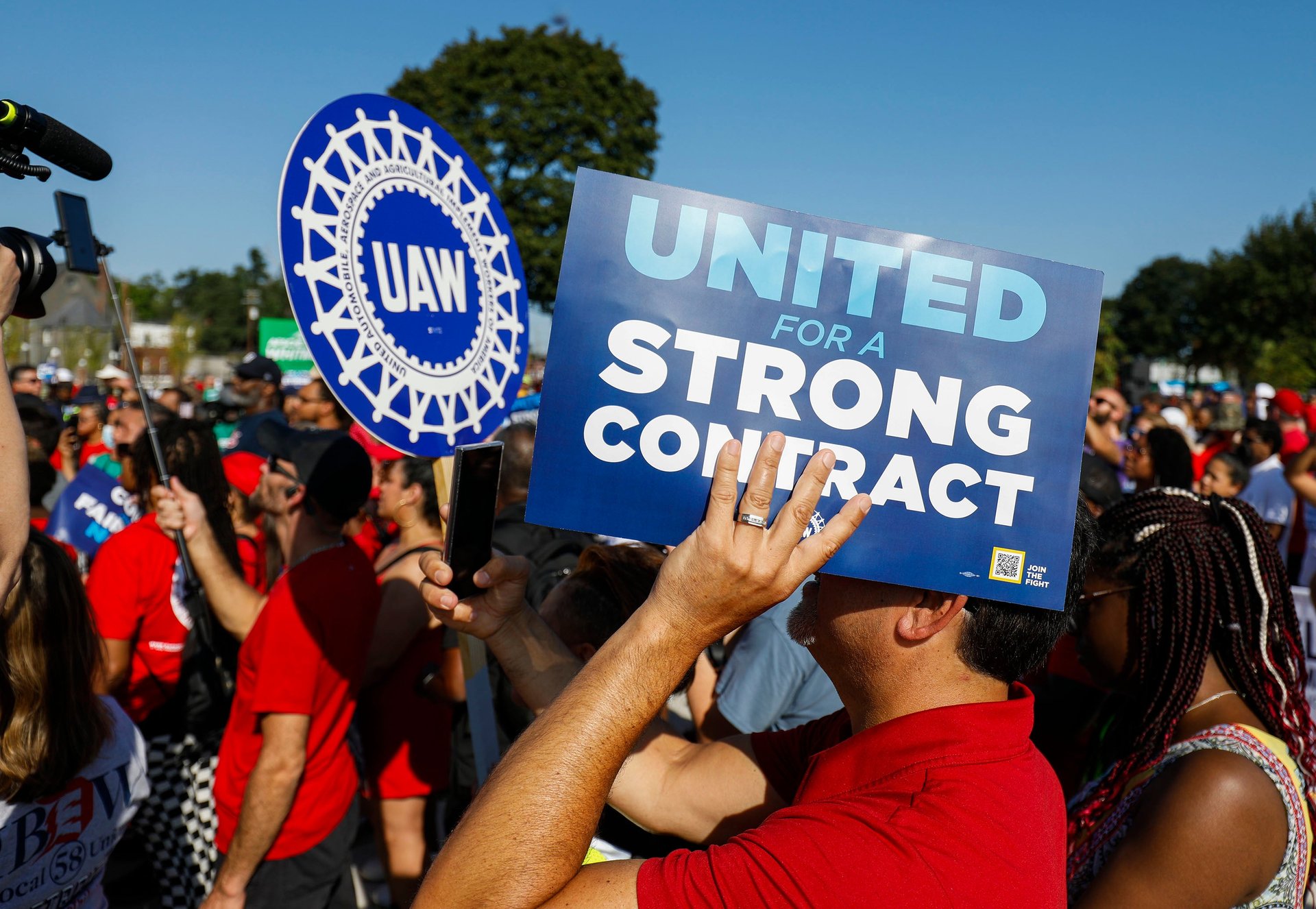How long have past UAW strikes lasted?
The autoworkers union authorized a targeted strike against Detroit's "big three" automakers in a coordinated walkout

The United Auto Workers (UAW) union went on strike against General Motors, Ford, and Jeep parent Stellantis, marking the first-ever simultaneous walkout against all “big three” Detroit automakers. The strike for now is targeted, affecting specific plants in Michigan, Ohio, and Missouri. But the union has not ruled out a general strike, and even the limited labor action could broadly halt production by preventing other factories from receiving essential materials.
Suggested Reading
The unprecedented scope of a full strike against the so-called “big three” would have an immediate impact on the regional midwestern economy, with a 10-day strike estimated to cost over $5 billion. If the strike continues, each automaker could lose as much as $500 million a week in earnings.
Related Content
Eleventh-hour negotiations affecting about 146,000 workers at UAW headquarters in Detroit failed to yield a deal. The main sticking point appeared to be wage increases. Representatives for the automakers offered 20% raises over the next four and a half years, half of the 40% wage increase the union is demanding. UAW president Shawn Fain said the companies also had rejected the union’s proposal for expanded pension benefits, an end to temporary workers, and a 32-hour work week.
How long have recent UAW strikes lasted?
The last UAW strike was against GM in 2019, when 48,000 workers walked out of 50 US factories in mid-September. It lasted six weeks, and cost the company about $4 billion in lost earnings and 300,000 units in production.
There was also a two-day strike in 2007, where 73,000 workers walked off GM factory floors to protest the lack of job security and an issue with retirement benefits. However, neither of these strikes are comparable to the potential economic effects of a simultaneous walkout by employees at all three automakers.
The last major strike to hit the auto industry in the US was in 1970, when 400,000 workers at 145 factories walked off the job at GM—then the largest corporation in the world—for 67 days. In total, the strike cost GM more than $1 billion and is considered one of the “most expensive strikes in American history.”
Looking back, the strike is considered a major victory for the UAW, which secured a 51-cent wage increase after GM had initially offered 26 cents. And the strike worked because of just how big GM was.
At the time, GM was the most important company in the US, with an $8 billion payroll, 39,000 domestic suppliers, and more than a million stockholders. The year before the strike, the company made up 2.3% of the US GDP.
While GM is considerably smaller now, the UAW’s current proposal to strike at all three automakers could certainly recreate the dire economic conditions that made the 1970 strike so successful.
Quotable: A blunt speech from UAW head Shawn Fain
“Living paycheck to paycheck, scraping to get by? That’s hell. Choosing between medicine and rent is hell. Working seven days a week for twelve hours a day for months on end is hell. Having your plant close down and your family scattered across the country is hell. Being made to work during a pandemic and not knowing whether you might get sick and die or spread the disease to your family is hell.” — UAW president Shawn Fain during a speech ahead of the strike deadline.
Support from Biden
US president Joe Biden has expressed his support for a fair deal between sides, remarking that “the UAW helped create the American middle class and...deserves a contract that sustains the middle class.”
